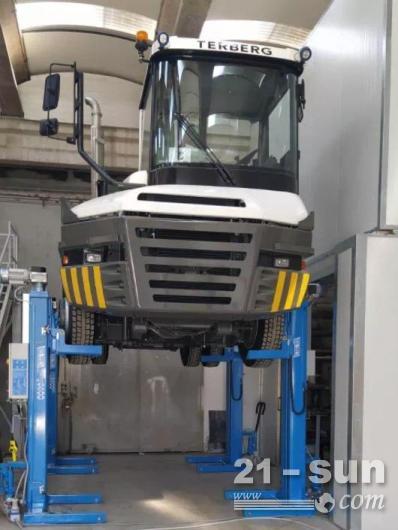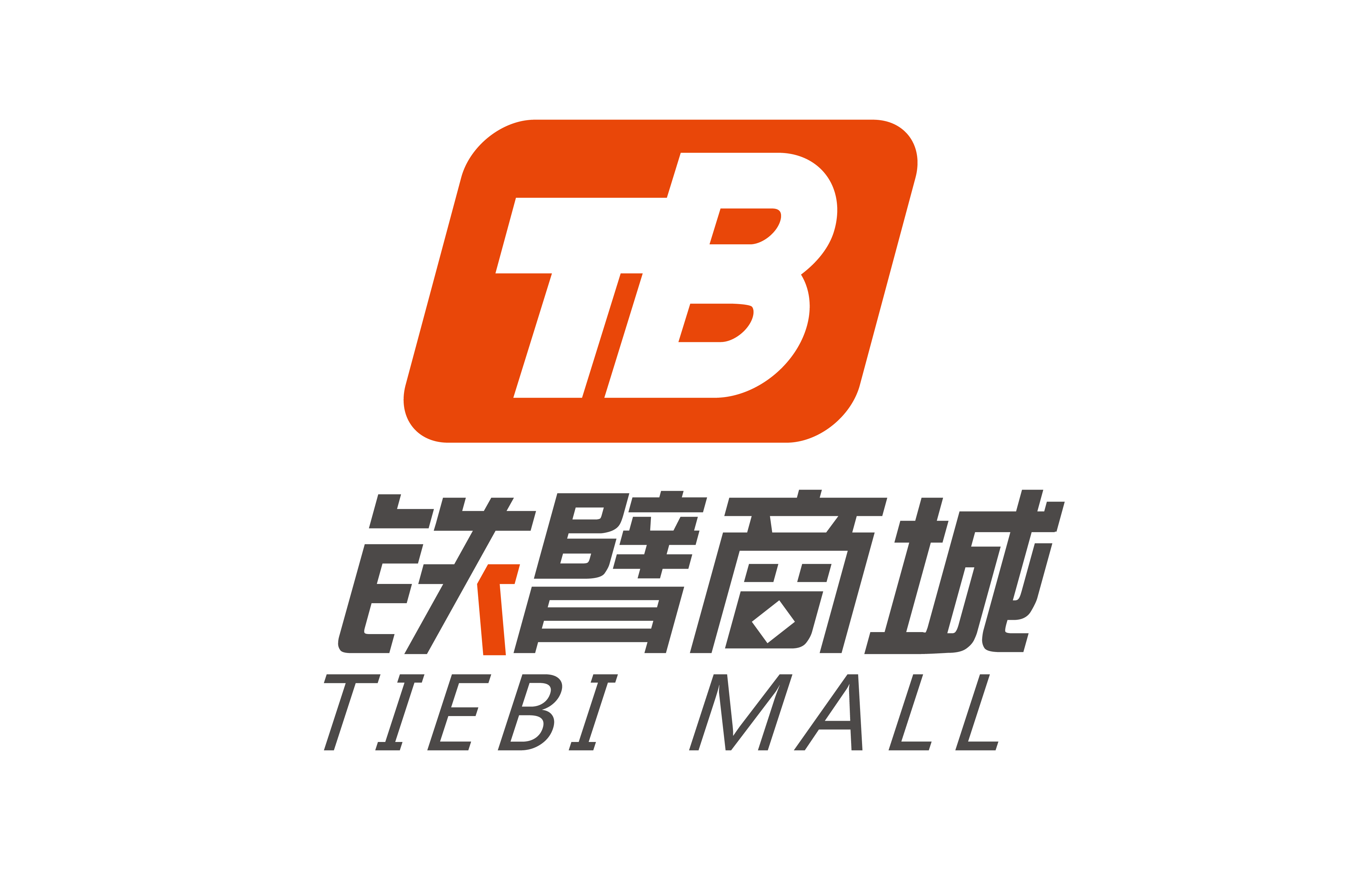иҘҝзҸӯзүҷзҡ„ Fundación Valencia port еҸ‘еёғдәҶдёҖд»Ҫе…ідәҺеңЁж¬§зӣҹж”ҜжҢҒзҡ„ H2PORTS йЎ№зӣ®жЎҶжһ¶еҶ…ејҖеҸ‘зҡ„ж°ўиғҪжәҗз ҒеӨҙзүөеј•иҪҰзҡ„ж–°еЈ°жҳҺ
Spain’s Fundación Valenciaport has issued a new statement on the status of the hydrogen terminal tractor being developed within the framework of the EU-backed H2PORTS project
ж №жҚ®и®°еҪ•пјҢTerberg иҮӘе·ұзҡ„дё“з”ЁзҮғж–ҷз”өжұ з ҒеӨҙзүөеј•иҪҰе·Із»ҸеңЁиҚ·е…°е’ҢжҜ”еҲ©ж—¶жёҜеҸЈе®ҢжҲҗдәҶ第дёҖиҪ®жөӢиҜ•пјҢ并еңЁиҝӣиЎҢжӣҙеӨҡжөӢиҜ•д№ӢеүҚиҝ”еӣһ Benschop зҡ„е·ҘеҺӮиҝӣиЎҢдәҶдёҖдәӣжӣҙж”№гҖӮTerberg еёҢжңӣеңЁ 2024 е№ҙжӢҘжңүдёҖеҸ°еҸҜд»ҘдёҠеёӮзҡ„з ҒеӨҙзүөеј•иҪҰгҖӮ
For the record, Terberg's own purpose-built fuel cell tractor has completed its first round of tests in Dutch and Belgian ports and is back in the factory in Benschop for some changes before going out on more tests. Terberg hopes to have a market-ready machine in 2024
Atena ж”№иЈ…зҡ„е ҶеңәжӢ–жӢүжңәзҺ°е·ІжҠөиҫҫ Grimaldi йӣҶеӣўзҡ„ Valencia Terminal Europa ж»ҡиЈ…з ҒеӨҙпјҢе°ҶеңЁжңӘжқҘдёӨе№ҙеҶ…иҝӣиЎҢе®һйҷ…иҝҗиҗҘжөӢиҜ•гҖӮиҜҘйЎ№зӣ®з”ұ Atena з®ЎзҗҶпјҢз”өжұ з”ұBallardжҸҗдҫӣзҡ„зҮғж–ҷз”өжұ дҫӣз”өгҖӮ
The Atena-modified yard tractor has now arrived at Grimaldi Group’s Valencia Terminal Europa ro-ro terminal, where it will be tested for the next two years in real operations. The project is managed by Atena and the batteries are powered by a fuel cell provided by Ballard.
еҰӮеүҚжүҖиҝ°пјҢзҮғж–ҷз”өжұ е°Ҷз”ұ CNH2 ејҖеҸ‘зҡ„移еҠЁеҠ ж°ўз«ҷеҠ ж°ўгҖӮиҝҷд№ҹе°Ҷз”ЁдәҺжө·ж–Ҝзү№зҮғж–ҷз”өжұ жӯЈйқўеҗҠпјҢиҜҘжӯЈйқўеҗҠе°ҶеңЁжёҜеҸЈзҡ„ MSC йӣҶиЈ…з®ұз ҒеӨҙиҝӣиЎҢжөӢиҜ•гҖӮеңЁиҝҷз§Қжғ…еҶөдёӢпјҢзҮғж–ҷз”өжұ жқҘиҮӘ HysterYale зҡ„йҷ„еұһе…¬еҸё NuveraпјҢжө·ж–Ҝзү№жҳҜиҜҘйЎ№зӣ®еҗҲдҪңдјҷдјҙгҖӮ
As previously discussed, the fuel cell will be refuelled from a mobile hydrogen refuelling station developed by CNH2. This will also be used for the Hyster fuel cell reach stacker that will be tested at the MSC container terminal in the port. In this case, the fuel cells are from HysterYale’s affiliate Nuvera. Hyster is a project partner.

иҝҷдёӨеј з…§зүҮйғҪеұ•зӨәдәҶ Atena иҪҰй—ҙгҖӮдёәйҒҝе…Қж··ж·ҶпјҢеә”жҳҺзЎ®иҜҙжҳҺ Terberg дёҚжҳҜиҜҘ Fundación Valencia йЎ№зӣ®зҡ„дёҖйғЁеҲҶгҖӮжӯЈеҰӮд№ӢеүҚжҠҘйҒ“зҡ„йӮЈж ·пјҢе®ғжҸҗдҫӣдәҶдёҖеҸ°жҷ®йҖҡзҡ„ 4x4 жҹҙжІ№з ҒеӨҙзүөеј•иҪҰпјҢе…¶еҠЁеҠӣдј еҠЁзі»з»ҹе·Іиў«е…¶дҪҚдәҺж„ҸеӨ§еҲ©зҡ„еӯҗе…¬еҸё Manuport Srl жӢҶйҷӨгҖӮ
Both these pictures show the Atena workshop. To avoid confusion, it should be made clear that Terberg is not part of this Fundación Valencia project. As previously reported, it provided a regular 4x4 diesel tractor and the power train was removed by its Italy-based affiliate Manuport Srl
Fundación жҠҘе‘Ҡз§°пјҢз ҒеӨҙзүөеј•иҪҰзҡ„иҪҰиҪҪеӯҳеӮЁзі»з»ҹз”ұеӣӣдёӘ 3 еһӢж°”зјёпјҲ350 barпјүз»„жҲҗпјҢжҖ»е®№йҮҸзәҰдёә 12 е…¬ж–ӨпјҢеҸҜдҝқиҜҒеңЁеҠ жІ№еүҚиҮіе°‘иҝһз»ӯиҝҗиЎҢ 6 е°Ҹж—¶гҖӮ
The Fundación reports that the tractor’s onboard storage system is made of four Type 3 cylinders (350 bar), with an overall capacity of around 12 kg, which guarantees a continuous operation of at least 6 hours before refuelling, corresponding to the average duration of a working shift [in Valencia].
з”өеҠЁжңәиў«жҸҸиҝ°дёә“дёҖз§ҚиҪ»дҫҝй«ҳж•Ҳзҡ„и®ҫеӨҮпјҢзү№еҲ«йҖӮз”ЁдәҺеҠҹзҺҮиҰҒжұӮй«ҳзҡ„еә”з”ЁгҖӮ” е®ғз”ұе…·жңү 25 kWh иғҪйҮҸе®№йҮҸзҡ„й«ҳжҖ§иғҪ LiFePO4 з”өжұ е’Ң 70 kW BallardзҮғж–ҷз”өжұ жЁЎеқ—дҫӣз”өгҖӮ
The electric motor is described as "a light and efficient device, particularly suitable for power demanding appliCATions." It is fed by a high-performance LiFePO4 battery, with 25 kWh energy capacity, and a 70 kW Ballard fuel cell module.

з”өеҠЁжңәеҸҜд»ҘеҗҢж—¶д»ҺзҮғж–ҷз”өжұ е’Ңз”өжұ жҺҘ收еҠЁеҠӣиҝӣиЎҢзүөеј•пјҢжҲ–иҖ…еңЁеҲ¶еҠЁжҲ–еҮҸйҖҹжңҹй—ҙдёәз”өжұ е……з”өгҖӮеҗҢж—¶пјҢеҰӮжһңйңҖиҰҒпјҢзҮғж–ҷз”өжұ еҸҜд»Ҙдёәз”өеҠЁжңәе’Ңз”өжұ жҸҗдҫӣз”өеҠӣгҖӮFundación иЎЁзӨәпјҢж··еҗҲеҠЁеҠӣзі»з»ҹжҳҫзӨәеҮәеҫҲй«ҳзҡ„иҝҗиЎҢж•ҲзҺҮпјҢеӣ дёәе®ғеҲ©з”ЁдәҶй«ҳиҫҫ 15% зҡ„еӨ§йғЁеҲҶеҠЁиғҪеӣһ收гҖӮ
The electric motor can receive power for traction from the fuel cell and battery simultaneously, or charge the battery during braking or decelerations. At the same time, the fuel cell can provide power both to the electric motor and the battery, if needed. The hybrid powertrain shows high operational efficiency, since it takes advantage of a significant share of kinetic energy recovery, up to 15%, says the Fundación.
“дёҺе…¶д»–еҸҜз”Ёзҡ„йӣ¶жҺ’ж”ҫжҠҖжңҜпјҲеҰӮзәҜз”өеҠЁзүҲжң¬пјүзӣёжҜ”пјҢиҜҘжҠҖжңҜжҳҫзӨәеҮәдёҖдәӣдјҳеҠҝгҖӮиҝҷз§Қж°ўзүҲжң¬иҝҳжҳҫзӨәеҮәиүҜеҘҪзҡ„иҝҗиЎҢиҢғеӣҙгҖҒзҹӯзҡ„зҮғж–ҷж—¶й—ҙе’ҢдҪҺзҡ„з»ҙжҠӨжҲҗжң¬гҖӮ”
"The technology shows some advantages compared to other available zero emission technologies like pure electric versions. This hydrogen version also shows a good operating range, short fuelling time and low maintenance cost."
欧жҙІйЎ№зӣ®“H2Ports - еңЁжёҜеҸЈе®һж–ҪзҮғж–ҷз”өжұ е’Ңж°ўжҠҖжңҜ”жҳҜз”ұз“ҰдјҰиҘҝдәҡжёҜеҹәйҮ‘дјҡдёҺз“ҰдјҰиҘҝдәҡжёҜеҠЎеұҖеҗҲдҪңеҚҸи°ғзҡ„дёҖйЎ№еҖЎи®®пјҢ并з”ұз§ҒиҗҘ/е…¬е…ұзҮғж–ҷз”өжұ е’Ңж°ўиҒ”еҗҲдјҒдёҡ (FCH JU) и®ЎеҲ’иө„еҠ©гҖӮе…¶дё»иҰҒзӣ®ж ҮжҳҜжөӢиҜ•е’ҢйӘҢиҜҒжёҜеҸЈжңәжў°дёӯзҡ„ж°ўжҠҖжңҜпјҢзӣ®ж ҮжҳҜжүҫеҲ°дёҺзҺ°жңүжёҜеҸЈиҝҗиҗҘзҡ„жҖ§иғҪе’Ңе®үе…ЁжҖ§зӣёеҢ№й…Қзҡ„и§ЈеҶіж–№жЎҲпјҢеҗҢж—¶дә§з”ҹйӣ¶жң¬ең°жҺ’ж”ҫпјҲеҚідёҚдёҖе®ҡдҪҝз”Ёз»ҝиүІж°ўж°”пјүгҖӮ
The European project “H2Ports - Implementing Fuel Cells and Hydrogen Technologies in Ports” is an initiative coordinated by Fundación Valenciaport in collaboration with the Port Authority of Valencia, and financed by the private/public Fuel Cell and Hydrogen Joint Undertaking (FCH JU) programme. Its main objective is to test and validate hydrogen technologies in port machinery, with the goal of arriving at solutions that match the performance and safety of existing port operations while producing zero local emissions (ie not necessarily using green H2).


























